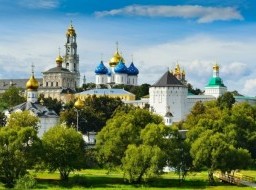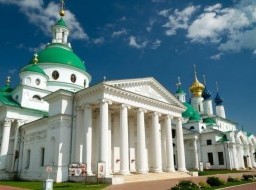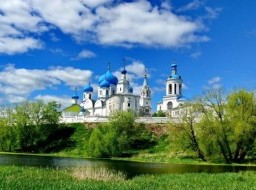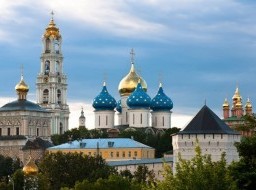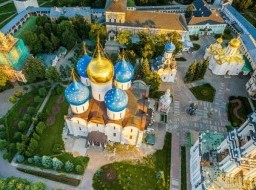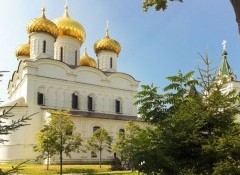Talashkino Manor
Eighteen kilometers south of Smolensk is the princely manor of the Teneshev family named Talashkino. Talashkino has a special place amongst the list of Russian manors, and well known as a Russian cultural center in the late XIX-early XX century. Some of the most gifted artists of the time worked there, such as I. E Repin, M.A. Vrubel, Rerih. The watercolor painting of its famous owner, Maria Claudievna Tenesheva, is the work of Repin, and is currently located in the Russian Museum of Saint-Petersburg. The princess Teneshev was a patron of the arts and helped develop enamel techniques. She also wanted to create for the world many different kinds of Russian craftsmanship and knowledge in the field of folk arts. So that is how the school of Russian architecture and handcraftsmanship was created. With her as a patron, the school soon had several art studios: ceramic, woodwork, and woodcarvings, cloth and embroidery dyeing, and metal-works. The first teacher and headmaster of the manor was S.V. Malutin (1859-1937). His invention, the wooden Matryoska doll, is currently the most beloved souvenir from Russia. Yet, the master’s talents extended into far greater works. Today, the main attractions of the manor are Malutin’s projects- the architectural complex “Teremok” (1900-1901) and the Church of Holy Spirit (1902-1903). Teremok The “Teremok” was built as one of artist Malutin’s project. Originally, it was built as a library for the rural students, and it had an interesting book collection. Today, the structure “Teremok” houses the exposition “Traditions and Experiments”, which is dedicated to the historic development of the neo-Russian style in the XIX and early XX century. In the museum you will see many household items, handcrafted wooden furniture, works made by children and students of Malutin, as well as the famous balalaikas, ornamented from the sketches of M.A Vrubel, who took part in the Paris exhibition. Malutin’s main specialty is woodcarving, so within the building you will find a huge number of excellent items-tables, sofas, chairs, benches, sleds, chests, etc. Church of the Holy Ghost Built as part of Malutin’s project, the church was decorated by a talented artist Nikolai Rerih, who was heavily influenced by the Smolensk fortress and the beauty of Talashkino. The decorative painting were made on cloth, and as a result, survived to this day. The mosaic on the façade of the main entrance is also still standing. It is called “Spas Not-Wrought-by Hand”. The color of the mosaic is very bright-sky blue, raspberry, and clear ochre. This church was not built based on the canons of the Eastern Orthodox Church, but it is considered a rare example of Russian architecture from late XIX-early XX centuries in which there is an organic combination of Russian national aesthetics and representations that share characteristics with Eastern cultures. |

